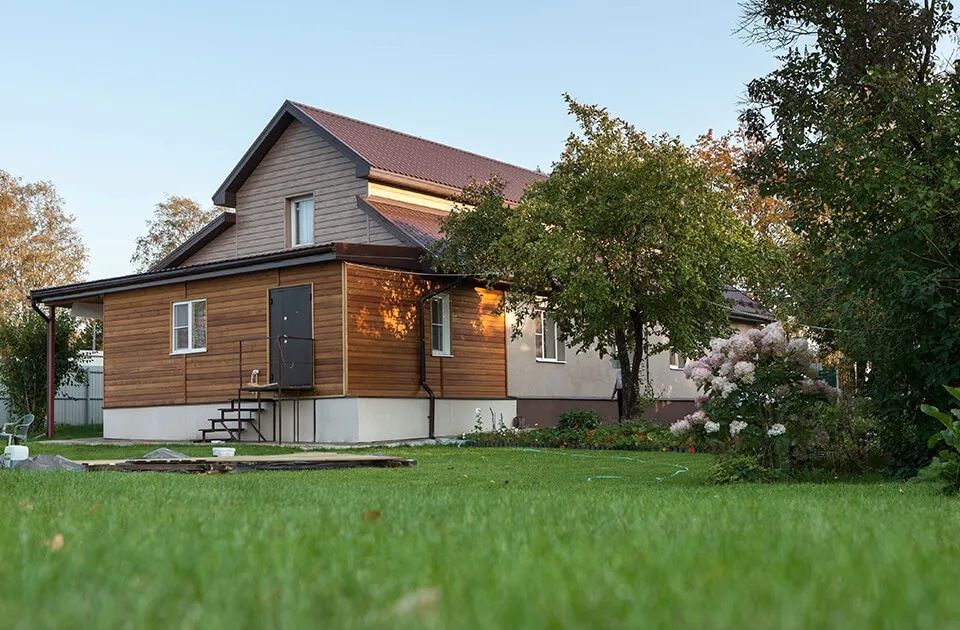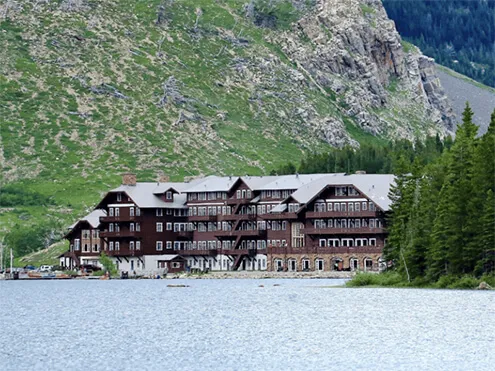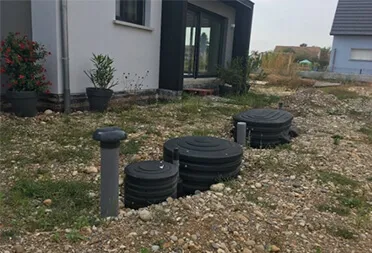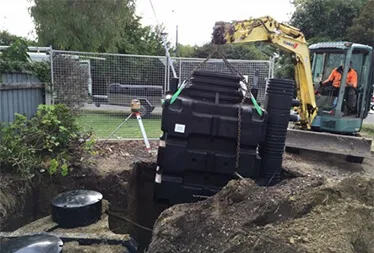Ecorock Septic Treatment
The ECOROCK unit is a small-sized wastewater treatment plant that caters from 6 to 30 persons application. The ECOROCK-system functions as a two-stages treatment plant. The raw sewage first enters a Primary tank to provide preseparation and initial breakdown of organic solids. The wastewater then passes through an effluent filter before discharging into the BIOROCK unit itself which incorporates the aerobic filtration process.


The cost saving wastewater treatment solutions
Unique, innovative solution to eco-friendly water treatment.
Lowest industry operational cost.
Longest industry emptying intervals.
Valuable and worthwhile investment for your home or establishment.
Benefits of using EcoRock
A solution for every need

Residential

Restaurants, Hotels and Lodges

Commercial and Institutional
How EcoRock plants work
1. Primary Tank
The Primary Tank clarifies the raw sewage by dividing fats, oils, greases and organic solids. The sewage then passes through an effluent filter, before discharging into the ECOROCK reactor.
2. Bioreactor
The Bioreactor purifies further the pretreated wastewater with a biological process. To naturally treat the wastewater, our systems use our unique ECOROCK Media, an exclusive and very efficient carrier material for bacteria.
3. Discharge
Depending on the ground type, effluent will be discharged by gravity, or by a pump.
What people are saying
“Through the use of fixed film bio filters, we have the ability to create cleaner outputs and regenerate our water sources. Imagine a world where one household can contribute over 200,000 gallons of clean effluent water each year back into aquifers with the least amount of environmental impact. This has the potential to completely eliminate water scarcity in the United States.”
- John Clanton








Need Help?
Call us at (800) 573-6771 or get in touch

Residential wastewater treatment FAQ
Purchasing a EcoRock wastewater treatment system
ECOROCK has conducted research for operating an outlet condensate pump (when necessary) with solar energy. The results of this research have demonstrated that the cost and reliability of this option were not suitable and as a result we have discontinued this option.
We are a national team of people who are passionate about protecting public health and the planet. Acuantia is a brand of the Rotoplas Group, a leading company in America that provides solutions for the storage, conveyance, treatment and recycling of water by partnering with local, quality septic service providers to offer the highest standard of excellence in the septic services industry. We are the one place for retrofit, repair, replacement, and installation of on-site wastewater treatment systems, and the ongoing maintenance of those systems for the future.
Installation of ECOROCK wastewater treatment system
The installation of the equipment must respect a minimum distance of 3m from the property boundary and from any trees or vegetation that have developed a significant root system.
The septic tank must be installed as close as possible (less than 10 metres) to the untreated waste water outflow point, in order to prevent clogging by grease deposits in the inlet line. If the septic tank is installed over 10 metres away, a grease trap must be installed upstream of the septic tank.
The septic tank, which is sealed, can be installed downstream at least 35 m from any intake point. This should be verified with the local authorities.
The choice of the type of exhaust fan depends on the equipment:
For the septic tank and the removal of its fermentation gas: the ventilation network will be equipped with a static exhaust fan or a wind-powered exhaust fan located at least 40 cm above the ridge of the building and at least 1m from any windows or any other ventilation system. The treatment unit will be ventilated separately from the septic tank by a wind-powered exhaust fan (with blades) also positioned on the ridge of the building.
Electrical ventilation is only necessary in the event of problems in ensuring effective air flow (lingering odours, unsatisfactory treatment efficiency). Nine times out of ten, the presence of a foul odour indicates a lack of ventilation or a poor exhaust duct layout.
Our installation instructions recommend the use of a wind-powered exhaust fan on the ECOROCK filter in order to avoid unpleasant surprises in the event of insufficient ventilation.
- When the filter ventilation is operating poorly, there is almost no smell given off and the owner only becomes aware of the poor water purification results during a service or maintenance. In order to maintain efficiency we recommend that a wind-powered exhaust fan is always installed. If the installer confirms however that a static exhaust fan would be sufficient (smoke test for example), this is not a problem.
- When the filter ventilation is operating poorly, there is almost no smell given off and the owner only becomes aware of the poor water purification results during a service or maintenance. In order to maintain efficiency we recommend that a wind-powered exhaust fan is always installed. If the installer confirms however that a static exhaust fan would be sufficient (smoke test for example), this is not a problem.
In all circumstances, if we are required to provide maintenance services under the guarantee, the first check carried out will concern ventilation efficiency, and if it is not effective, this will need to be rectified at the owner’s expense.
The system’s ventilation must be carried out very carefully. On the one hand, the fermentation gas from the septic tanks must be removed, and on the other hand, the proper ventilation of the ECOROCK treatment unit must be assured.
The diameter indicated in the ECOROCK instructions is 100 mm. This is the European standard and it is from that perspective that the ECOROCK system has passed initial certification tests and operates in other countries. The 110 mm diameter used extensively in the United Kingdom is a minimum. As a means of taking the necessary precautions, as with the installation of any sanitation ventilation system, there should be no 90 ° bends. The system will operate perfectly with 45 degree bends with no reverse slope. The diameter of the inlet lines in the septic tank must be at least equal to the diameter of the building’s effluent discharge outlet.
In response to your enquiry regarding the use of the ECOROCK treatment units with a “non ECOROCK” septic tank, we can confirm that this is technically possible but shall be subject to our review with respect to guarantee issues.
The septic tank configuration is not exclusive to the United Kingdom. Germany for example also recognises the assembly of the ECOROCK treatment unit with other CE labelled septic tanks. A partition wall in the septic tank is mandatory under German legislation, which we have standardised in order to optimise our range of products.
We can confirm that the ECOROCK treatment units can be used alongside any septic tank as long as it benefits from the CE label, is effective, the correct size and equipped with a pre-filter. The treatment effectiveness is not affected, the conditions of guarantee with respect to the treatment unit shall remain unchanged and the installation and maintenance instructions are the same. Specific instructions from the manufacturer of the septic tank in question should be taken into account.
Disposing of rainwater into a private sanitation system is prohibited and we strongly advise against connecting a gutter to the ECOROCK system. Doing so may lead to non-compliance.
On the one hand, the amount of water cannot be controlled and on the other hand, rainwater is polluted with dust and various types of residues, which, in large amounts, tend to, in comparison with domestic effluents, upset the balance. The bacteria need organic matter and the disposal of rainwater will “rewash” the system during a shutdown period. Excessive water will lead to system inefficiency.
We recommend a distance between the septic tank and the treatment unit of 1 metre in our instructions, in order to leave ample work space for installing the connections. Otherwise a depth of fill of 30 cm should be adhered to.
However, you can move the treatment unit as long as adequate slope is maintained to ensure gravity flow. We suggest using risers and a lifting station if necessary.
A soil study should provide information on the output of treated water discharged from the treatment unit. Each configuration is studied and the chosen solution will depend upon the nature of the soil, the decision of the local authorities and the technical specification of the engineering department.
The ECOROCK non-electric sewage treatment plant is designed for installation on land with groundwater. To alleviate this installation constraint in the given configuration, the system may be surface mounted. We supply the appropriate fittings for above-ground installation and the assembly guide provides installation recommendations.
The ECOROCK non-electric sewage treatment plant is designed for installation on land with groundwater. To alleviate this installation constraint in the given configuration, the system may be surface mounted. We supply the appropriate fittings for above-ground installation and the assembly guide provides installation recommendations.
The ECOROCK sewage treatment plant is not designed for installation on a flood plain and can never be (as with all of our competitor’s systems) submerged in water without damage occurring. We can guarantee the wearability of the system when installed below ground in a wetland area but never when submerged in flooded land due to the connections, which, by definition, in most cases only assure inside to outside sealing, as well as due to our buffers which are not designed for this type of installation without special fittings.
In the presence of dry toilets, bacteria would not be able to feed the organic matter and the system would operate poorly. Our guarantee will therefore not apply.
Using a ECOROCK wastewater treatment system
Treated effluents discharged from the ECOROCK system are of very high quality and can be disposed of into the natural environment. The purification efficiency results expressed as a percentage are as follows, BOD: 99%, COD: 96%, SS: 99%.
In the UK, there is a requirement to ensure the subsoil infiltration of the treated effluent, and discharge into the tank or into a natural environment is subject to authorisation. However this may vary depending on the nature of the land and other specific factors relating to the local set-up. It is also possible that the underground irrigation of an ornamental garden may be permitted. The use of treated water for watering plants intended for human consumption is prohibited.
The volume of sludge produced is influenced by how the unit is used (size, frequent overloads, type of waste water, routine maintenance). Each unit is different. We estimate that an installation of 0.5l/day/p.e. will produce 182.5 litres per p.e. of sludge per year in the first year. The reality seems to be closer to 0.3l/p.e./year. The volume of sludge produced will reduce over the first few years. Normally after the 4th or 5th year, the residual volume is reduced by 40%. When emptying, the cleaner must leave a few centimetres of sludge at the bottom of the tank as the bacteria that break down the sludge are specific and take a long time to develop.
If your residence is vacant for a year, it will not be necessary to empty your septic tank; you will only need to remove the grease deposits. When your unit is not in operation, the grease hardens and will lead to the clogging of the septic tank.
BioRock wastewater treatment maintenance
The replacement frequency of the treatment unit’s mineral-based media bags can be found in the user guide; we indicate an average lifetime of 10 years.
This duration is indicative and is intended to raise user awareness on the necessary maintenance of their ECOROCK system.
We have units that have been in operation for over 20 years in northern Europe, and are still operating extremely well with the original bags. As a consequence, we know that with effective monitoring, the lifetime of the bags may be over 10 years.
The mineral-based media is an inert material, it does not deteriorate over time and retains its characteristics if the system is serviced regularly.
In the maintenance recommendations, as long as no abnormal contamination has occurred, you are advised, among other things, to only call out a professional to perform maintenance services every 5 to 10 years, which involves removing the bags, rinsing them, reshaping them (airing them out) and finally repositioning them.
The mineral-based media is an inert material, it does not deteriorate over time and retains its characteristics. If the system is maintained the average lifetime is 10 years. However, if system maintenance is neglected and accidental pollution has implications on the purification efficiency of the treatment unit, you will almost certainly need to change the media bags as soon as possible. We recommend that you call upon the services of a professional who will replace the bags and dispose of the waste in accordance with local regulations and standards. This is inert inorganic waste, which after treatment of the organic pollutants can be fully recycled. It can also be stored in an ultimate waste landfill.
The average lifetime of 10 years in indicative and is intended to raise user awareness on the need to maintain their ECOROCK system regularly. We have units that have been in operation for over 20 years in northern Europe, and are still operating extremely well with the original bags. As a consequence, we know that with effective monitoring, the lifetime of the bags may be longer than 10 years.
The mineral-based media is an inert material, it does not deteriorate over time and retains its characteristics if the system is well maintained.
However, if system maintenance is neglected and accidental pollution has implications on the purification efficiency of the treatment unit, you will almost certainly need to change the media bags as soon as possible. We recommend that you call upon the services of a professional. The cost for replacing the media bags is currently estimated at approximately GBP 700 for a 6PE system.
As with all drainage systems, depending on the unit itself (slopes, distances etc.), the grease and floating deposits mainly originating from cooking and laundry activities tend to settle and harden in the pipes between the house and the septic tank when the unit is not in operation much or not at all over a certain period. Your installer will advise you to put in place inspection tees with a plug allowing for maintenance to be carried out easily in the event of clogging.
For the septic tank: when the unit has been shut down, it is simply a question of rinsing the pre-filter with clean water (this is the brush located on the septic tank outlet) to prevent accumulated matter from hardening over time and clogging the filter. Depending on the unit, if a grease trap is required, it should be emptied before each shutdown. These precautions apply to all systems available within our range, following a prolonged shutdown period.
The ECOROCK treatment unit is not affected as only the pre-treated effluents, which are grease free, reach this point. It is simply a question of performing a visual inspection every year in accordance with our user guide. On start-up, after 6 months of inactivity, we recommend letting the clean water run until the water runs directly into the BIOROCK unit itself; this will allow for the correct flow through the splitter to be checked and the ECOROCK media to be re-moistened. No additives of any nature whatsoever must be used in the ECOROCK filter.
We recommend that you entrust the annual service of your unit to a professional. If your installer is not in a position to offer a maintenance contract, we can put you in contact with a specialist company, which you can request on the contact page of our website.
As with all drainage systems, depending on the unit itself (slopes, distances etc.), the grease and floating deposits mainly originating from cooking and laundry activities tend to settle and harden in the pipes between the house and the septic tank when the unit is not in operation much or not at all over a certain period. Your installer will advise you to put in place inspection tees with a plug allowing for maintenance to be carried out easily in the event of clogging.
For the septic tank: when the unit has been shut down, it is simply a question of rinsing the pre-filter with clean water (this is the brush located on the septic tank outlet) to prevent accumulated matter from hardening over time and clogging the filter. Depending on the unit, if a grease trap is required, it should be emptied before each shutdown. These precautions apply to all systems available within our range, following a prolonged shutdown period.
The ECOROCK treatment unit is not affected as only the pre-treated effluents, which are grease free, reach this point. It is simply a question of performing a visual inspection every year in accordance with our user guide. On start-up, after 6 months of inactivity, we recommend letting the clean water run until the water runs directly into the BIOROCK unit itself; this will allow for the correct flow through the splitter to be checked and the ECOROCK media to be re-moistened. No additives of any nature whatsoever must be used in the ECOROCK filter.
We recommend that you entrust the annual service of your unit to a professional. If your installer is not in a position to offer a maintenance contract, we can put you in contact with a specialist company, which you can request on the contact page of our website.
The ECOROCK compact unit is autonomous, easy to use and does not require any adjustment. However, we encourage, for your convenience, and the system’s long-term efficiency, that you have your unit serviced by a professional.
In the user guide provided by your installer you will find maintenance instructions and information on maintenance intervals. If you no longer have the user guide, let us know and we will send you one. The installers or the cleaners can perform the maintenance of the ECOROCK unit. ECOROCK has set up a maintenance service based on an annual contract. Please do not hesitate to contact us for any further information you may require.
The ECOROCK compact treatment system consists of a septic tank and treatment unit. Bacteria develop slowly and naturally in the septic tank in the absence of oxygen (anaerobic). The addition of activating products is not necessary. At the end of the first year, the production of sludge will reduce significantly. When emptying the septic tank, the professional will leave a small quantity of the effluent at the bottom to allow for faster start-up. No product in any form whatsoever should be added to the treatment unit.